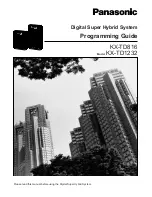
34
Make the appropriate adjustments to the polar axis to eliminate any drift. Once you have eliminated all the drift, move to the star near the
eastern horizon. The star should be 20 degrees above the horizon and within five degrees of the celestial equator.
•
If the star drifts south, the polar axis is too low.
•
If the star drifts north, the polar axis is too high.
Again, make the appropriate adjustments to the polar axis to eliminate any drift. Unfortunately, the latter adjustments interact with the prior
adjustments ever so slightly. So, repeat the process again to improve the accuracy checking both axes for minimal drift. Once the drift has
been eliminated, the telescope is very accurately aligned. You can now do prime focus deep-sky astrophotography for long periods.
NOTE: If the eastern horizon is blocked, you may choose a star near the western horizon, but you must reverse the polar high/low error
directions. Also, if using this method in the southern hemisphere, the direction of drift is reversed for both R.A. and DEC.
Summary of Contents for CPC 1100
Page 1: ...I IN NS ST TR RU UC CT TI IO ON N M MA AN NU UA AL L...
Page 58: ...58 APPENDIX E MAPS OF TIME ZONES...
Page 59: ...59...
Page 60: ...60...
Page 61: ...61...
Page 62: ...62...
Page 63: ...63...
Page 64: ...64...
Page 65: ...65...
















































